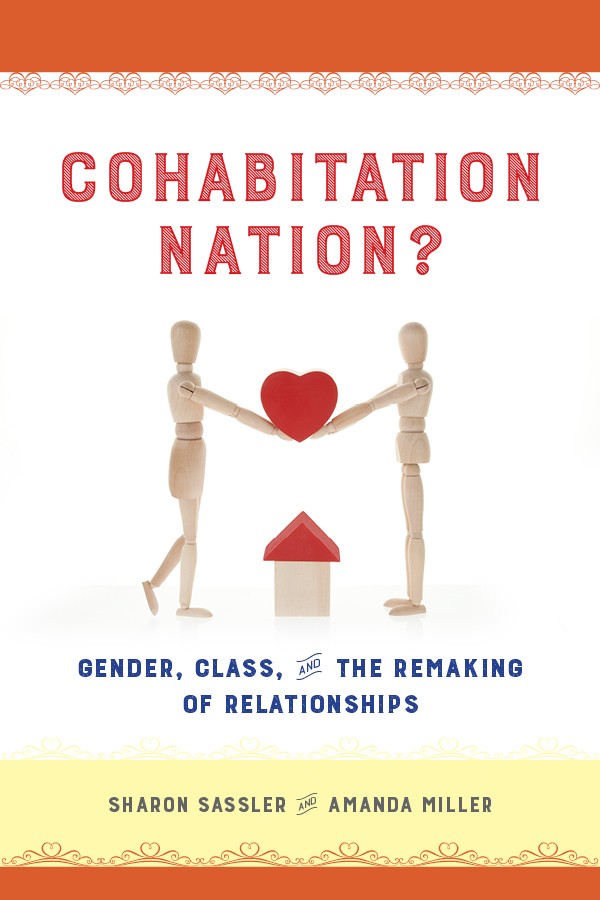New book investigates who shacks up and why
By Susan Kelley
More young unmarried Americans are living together than ever before, but not much is known about why couples decide to take on this romantic rite of passage and how socio-economic status affects their decisions.
A new book by Cornell demographer Sharon Sassler, professor of policy analysis and management, sets out to fill these gaps.
“Cohabitation Nation: Gender, Class, and the Remaking of Relationships” takes an intimate look inside the lives of more than 60 young couples. Sassler’s co-author is Amanda Jayne Miller of the University of Indianapolis.
Although the authors have based the book on rigorous research, they’ve written it in an accessible, entertaining style. A chapter on domestic living is titled “I Like Hugs, I Like Kisses, but What I Really Love Is Help With the Dishes.” And communication, contraception and conception is covered in a chapter titled “Family Planning or Failing to Plan.” Other chapters explore topics including finances, when to have children, marriage and expectations for the future.
The book draws on Sassler and Miller’s research on social class and cohabitation in the United States.
From 2004 to 2006, they did in-depth interviews with 31 middle-class couples and 30 couples they labeled “service class.” The service-class couples worked in fields such as data entry, telemarketing, retail and food service; their education had stopped either at a high school degree or some college classes. The middle-class couples were college educated and worked in professions such as architecture, education, business and health care.
The researchers gathered stories about their relationships, from when and how they started dating to what prompted them to move in together, how they share domestic chores, decisions about contraception and how they see their future together.
Sassler and Miller found socio-economic forces shape how and why these relationships evolve.
For example, the service-class couples moved in together far more quickly, on average, than their middle-class peers, often due to economic pressures.
When it came to having children, both sets of couples generally said “financial stability” was a prerequisite. But that meant different things for each group.
The middle-class partners often said they wanted to settle into their careers before taking on parenthood, or that they wanted their partners to do so. For them, becoming financially established took time, and that meant they would delay childbearing. In contrast, the less privileged couples often experienced unintended pregnancies, even though nearly half already had a child, usually from one partner’s previous relationships.
The outcome of the relationships also differed. For middle-class couples, cohabitation often led to marriage within a few years. For the less privileged, the sequence was more varied. They were more likely to have children (often unintentionally), break up before a wedding or divorce if they did get married.
Overall, the middle-class couples were better able to communicate what they wanted in the relationship, envision the ideal timing for events such as discussing marriage, and negotiate with their partners. In contrast, the service-class couples were more often “reacting to the imperfect hand they were dealt.” They often weren’t able to articulate their ideal plan, perhaps for lack of stability, the authors said.
“A real understanding of the factors reshaping the American family requires a fuller awareness of not just how the highly educated meet, form intimate relationships and, ultimately, marry, but also how young adults who are located at different spots on the advantage curve fare,” the authors write. “Illuminating those differences is the mission of this book.
Media Contact
Get Cornell news delivered right to your inbox.
Subscribe